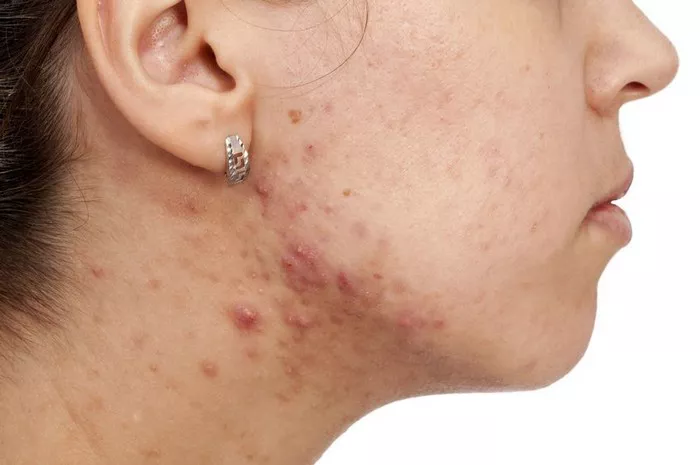Ringworm, despite its misleading name, is not caused by a worm but by a group of fungi known as dermatophytes. These fungi thrive on keratin, a protein found in the skin, hair, and nails. The condition is medically termed “tinea,” followed by the affected area (e.g., tinea corporis for body ringworm, tinea pedis for athlete’s foot).
Ringworm is highly contagious and spreads through direct contact with infected individuals or animals, or by touching contaminated objects such as clothing, towels, and surfaces. The infection manifests as a red, itchy, and scaly ring-like rash, often with a clear center. While it can affect anyone, those with weakened immune systems, children, and people with pets are at higher risk.
The Role of Hand Sanitizers in Infection Control
Hand sanitizers have become a staple in maintaining hygiene, particularly in settings where soap and water are not readily available. They are designed to reduce the number of microbes on the skin, primarily targeting bacteria and some viruses. The active ingredient in most hand sanitizers is alcohol, typically ethanol or isopropanol, which works by denaturing proteins and disrupting microbial cell membranes.
Hand sanitizers are convenient and effective against many common pathogens, including those responsible for colds, flu, and some bacterial infections. Their popularity surged during the COVID-19 pandemic as a quick and portable means to curb the spread of the virus.
Effectiveness of Hand Sanitizers Against Fungi
The efficacy of hand sanitizers against fungi, including the dermatophytes causing ringworm, is less straightforward than their impact on bacteria and viruses. Fungi have different cell structures and resilience compared to other microbes. Dermatophytes, the fungi responsible for ringworm, have a robust cell wall that can protect them from environmental stresses, including some antiseptic solutions.
1. Alcohol-Based Hand Sanitizers
Alcohol-based hand sanitizers are the most common type available and are effective against a broad spectrum of microbes. They generally contain 60-95% alcohol. Studies have shown that high concentrations of alcohol can indeed kill some fungi, but the effectiveness can vary significantly depending on the species and environmental conditions.
For dermatophytes, alcohol alone may not be fully effective in penetrating the thick, protective cell wall. While alcohol-based sanitizers can reduce the number of fungal spores on the skin, they may not eliminate them completely, especially if the sanitizer is not applied thoroughly or left on the skin long enough.
2. Non-Alcohol-Based Hand Sanitizers
There are also non-alcohol-based hand sanitizers that use other active ingredients such as benzalkonium chloride, triclosan, or chlorhexidine. These compounds can have antifungal properties, but their effectiveness against dermatophytes varies. Benzalkonium chloride, for example, is known for its broad antimicrobial activity, but its efficacy against ringworm-causing fungi specifically is less well-documented compared to alcohol.
Scientific Studies and Evidence
Research on the specific impact of hand sanitizers on ringworm fungi is limited. However, some studies provide insights into the broader antifungal properties of hand sanitizers:
1. Alcohol’s Antifungal Properties: Research indicates that alcohol can disrupt fungal cells at high concentrations. A study published in the Journal of Clinical Microbiology demonstrated that ethanol concentrations above 70% could effectively kill certain fungal spores. However, the effectiveness varied depending on the exposure time and fungal species.
2. Benzalkonium Chloride: This compound, found in some non-alcohol-based sanitizers, has shown effectiveness against a range of fungi. A study in the Journal of Hospital Infection noted its efficacy in reducing fungal contamination, though its specific impact on dermatophytes like those causing ringworm was not the primary focus.
3. Chlorhexidine: Another common non-alcohol-based sanitizer ingredient, chlorhexidine, has broad-spectrum antimicrobial properties. Research published in the British Journal of Dermatology found it effective against Candida species, another type of fungus, but data on dermatophytes remain sparse.
SEE ALSO: Will Ringworm Spread over Body
Practical Considerations and Usage
While hand sanitizers can play a role in reducing the spread of ringworm, they should not be relied upon as the sole method of prevention or treatment. Here are some practical tips for managing and preventing ringworm infections:
Hand Hygiene Practices
Use Soap and Water When Possible: Washing hands with soap and water for at least 20 seconds is the most effective way to remove fungi, bacteria, and viruses. Hand sanitizers are a good alternative when soap and water are not available, but they should not replace regular handwashing.
1. Apply Sanitizer Correctly: When using hand sanitizer, apply a generous amount to cover all surfaces of the hands, including between fingers and under nails. Rub hands together until dry, which usually takes about 20 seconds.
2. Consider Antifungal Hand Creams: In addition to sanitizers, using antifungal hand creams can provide an extra layer of protection, especially if you are frequently in contact with infected individuals or animals.
Environmental Control
1. Clean and Disinfect Surfaces: Regularly clean and disinfect surfaces that may be contaminated with fungal spores. Use disinfectants that are effective against fungi, such as those containing chlorine bleach or hydrogen peroxide.
2. Laundry Hygiene: Wash clothing, bedding, and towels in hot water and use a hot dryer cycle to kill fungal spores. Avoid sharing personal items with others.
3. Pet Care: If you have pets, especially those with signs of ringworm, seek veterinary care promptly. Keep their living areas clean and regularly wash their bedding.
Medical Treatment
1. Topical Antifungal Medications: Over-the-counter topical antifungal creams, lotions, and ointments can effectively treat ringworm. Common active ingredients include clotrimazole, miconazole, and terbinafine.
2. Prescription Medications: For more severe or persistent infections, a healthcare provider may prescribe stronger topical or oral antifungal medications.
3. Follow Treatment Guidelines: Complete the full course of treatment as prescribed, even if symptoms improve before the medication is finished. This helps ensure the infection is fully eradicated and reduces the risk of recurrence.
Conclusion
Hand sanitizers, particularly those with high alcohol content, can reduce the number of ringworm-causing fungi on the skin, but they are not foolproof. Their effectiveness depends on proper application and the concentration of active ingredients. For comprehensive protection against ringworm, hand sanitizers should be used in conjunction with regular handwashing, environmental cleaning, and appropriate medical treatments.
Infection control is multifaceted, and understanding the limitations and proper use of hand sanitizers is crucial in managing fungal infections like ringworm. By combining good hygiene practices with effective medical treatments, the spread and impact of ringworm can be minimized, ensuring healthier environments for everyone.
Related Topics:


























